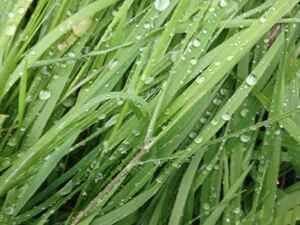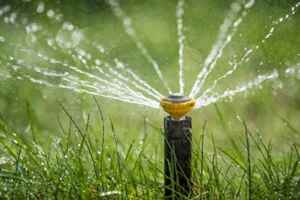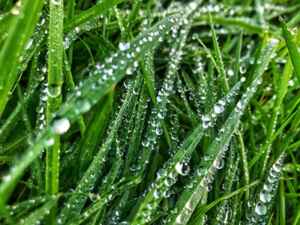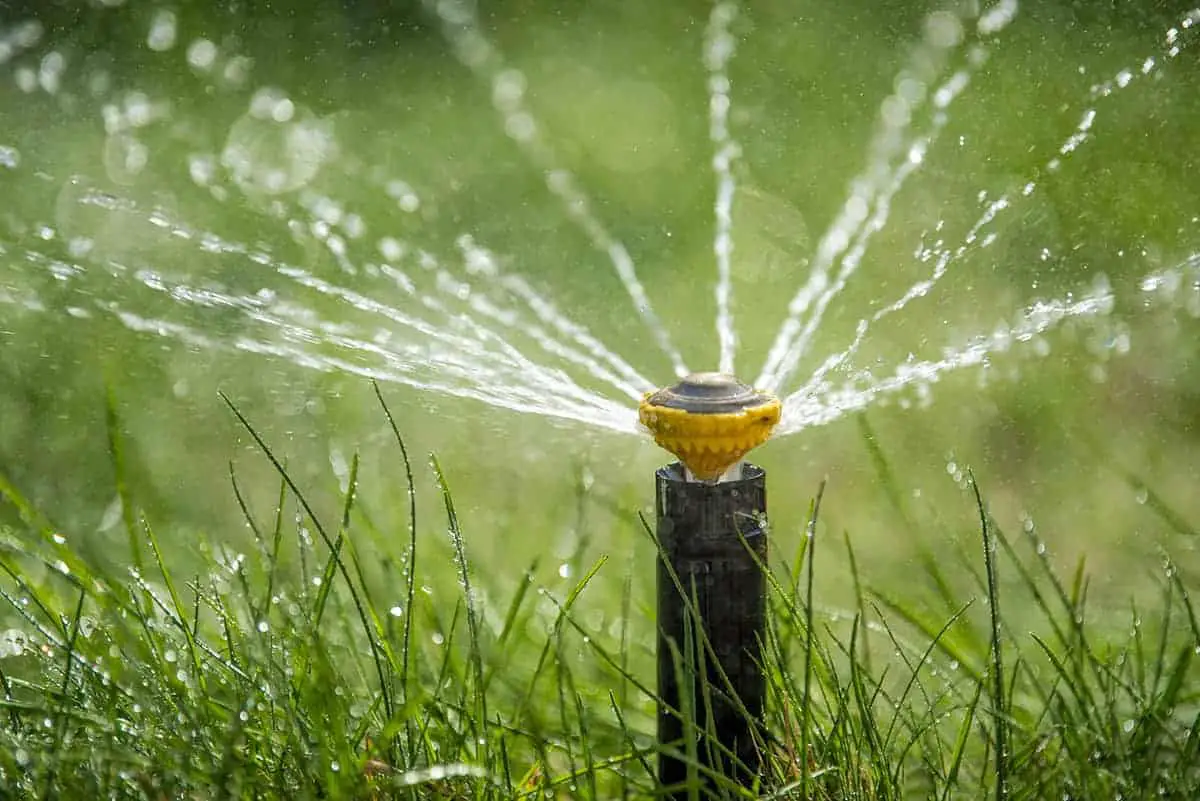Indications You’re Over-Watering Your Lawn
During the summer months, it’s easy for homeowners to get caught up in the joy of nurturing their lawn. However, if you aren’t paying attention to signs your grass is too wet, it might lead to other problems. After over-watering my Kentucky Bluegrass lawn last month, I began to realize the signs I wasn’t watching for. Fortunately, it’s not too late to fix the problem before it becomes worse!
So, what are the 7 signs you’re watering your lawn too much? The signs to look out for include a greener lawn, water puddles on top of your grass, sticky grass, browning spots, a thin and compacted lawn, overgrowth of weeds and fungi. These are all caused because water is not draining into the roots of your lawn, instead water sits on top and as a result, drowns out any grass.
There is a lot of signs to watch out for if you think you might be over-watering your lawn. Be sure to read these 7 signs as they can save you time and money in the long run!
7 Signs of Over-Watered Grass
Although it’s vital to water your lawn if it’s going to wilt, after a few signs of over-watering your lawn, you’re going to end up with an abundance of more problems. The main signs of drowning grass include:
 1. Your Lawn is Greener Than Normal
1. Your Lawn is Greener Than Normal
Because you’re making sure your lawn has enough water, it can sometimes have a greener appearance than normal.
This is because too much water can push nutrients through your soil, leading to an encouraging environment for weeds. It’s best to give your grass some time without any irrigation if you’re going to avoid this problem.
2. Water Puddles on Top of Your Grass
After watering your lawn, signs you’re watering it too much include water puddles that stay on top of your grass.
3. Your Grass is Sticky
If you’re noticing signs you’re watering your lawn too much, this is another indication that excess moisture has penetrated the soil surrounding your Kentucky Bluegrass. When this happens, it can lead to signs your grass is sticky, making it hard to pull out when you walk on the lawn.
4. Brown Spots in Your Lawn
Although signs your grass is too wet may lead to greener growth, signs of over-watering can also result in signs your grass is too wet showing up as brown spots. If you’re seeing signs your Kentucky Bluegrass has brown patches, it may be signs you’re watering your lawn too much.
5. Your Lawn is Thin and Compacted
When signs you’re over-watering your lawn set in, it can damage the roots of your grass. If this happens, signs your ground is compacted will show up as grass that’s thin and has a dull appearance. Although it’s best to avoid signs of over-watering, there are signs you’re watering too little your grass can show up as well.
For example, signs your lawn is too dry include signs of withering and browning spots. As for signs, your grass needs water, the main signs include the soil becoming hard to the touch when you poke it with a finger.
6. Overgrowth of Weeds
When your lawn is overgrown, it may be the optimum conditions for weeds like smooth crabgrass or yellow nutsedge to thrive. If you see a lot of these pesky plants moving in and taking over then there’s probably too much water being given at once with no time allocated between each plant – leading them all up by their roots!
 7. Fungi
7. Fungi
If you notice signs of over-watering in your lawn, signs you’re watering too much may also include signs of fungi. To avoid lawn fungus, make sure to check the soil for signs of moisture abuse.
If you notice any discoloration on your grass blades or mushrooms popping up across from one another in a straight line—these could be indicators that water has been excessive enough so as not only to encourage fungal growth but also to potentially harmful pets and children too!
What Does an Underwatered Lawn Look Like?
An underwatered lawn is when the lawn isn’t given enough water to thrive. Signs of underwatered lawns include brown, yellow, or dry patches in different areas of the lawn. If underwatered long enough these patches can become large and spread throughout the yard.
Underwatering a lawn is one of the easiest problems to fix. A lawn underwatered for a short period of time can recover in just under a week. However, underwatered lawns can take much longer to heal depending on how severe the under-watering was and the type of grass that is underwater.
How Do You Care For an Underwatered Lawn?
There is a really easy way to care for underwatered lawns, and that is to water them regularly. To fix underwatered lawns, you need to add more water than usual for the grassroots to properly grow downward and reach the groundwater. This takes under a week.
Treating underwatered grass correctly makes all the difference for a thriving lawn. Using underwatered soil as a base will only create a foundation for weeds, fungus, and insects to thrive in. The best way to treat underwatered grass is with over-watering, but regular watering should also be done until signs of underwatered areas fade away.
People can care for underwatered grass in their own yard, but underwatered lawns are often caused by faulty sprinklers or irrigation systems. To avoid underwatering your lawn in the future, make sure your irrigation system is tuned up and working correctly every year before the growing season begins. You should also schedule yearly under-watering tests to be done on your lawn to make sure you are under watering correctly.
If underwatered grass is left untreated it might be yellow, brown, or die completely. If underwatered long enough, underwatered grass patches might spread throughout the yard. Eventually, underwatered lawns can fade away and become almost completely dead if it is not treated promptly.
How Often Should I Be Watering My Lawn?
Your lawn needs water frequently to prevent water damage, make repairs, and reduce water costs. Watering your lawn too often can also be a waste of water and money. If you water your lawn the right amount it will save water and prevent overwatering that results in damaged grasses and other problems.
Watering frequency will depend on several factors, including water-resistant grasses, temperature, wind, water pressure, and other environmental factors. For instance, watering your lawn too often in the hot summer months can contribute to water stress for grasses which makes them more susceptible to heat damage. Conversely, watering too infrequently may cause water damage to the roots or base of trees or shrubs that could require water damage repair.
It is important to water your lawn the right amount to water your lawn, water use depends on weather factors and other conditions in your yard. If you water too often, it can lead to overwatering which can cause water damage in grasses.
- You should water your lawn every five days in the summer if you water for five minutes.
- Water the lawn every four days in the summer if you water for 10 minutes.
- You water your lawn every three or more days in the summer if you water for 15 minutes.
These are general guidelines, but you should water your lawn whenever it is dry to prevent overwatering which can cause damage.
 Can My Geographical Climate Affect My Lawn?
Can My Geographical Climate Affect My Lawn?
In some areas of the United States, signs you’re watering your lawn too much can be signs you’re watering it too little in other regions. For example, if you live in a desert environment, signs you’re watering your lawn too much include browning spots. On the other hand, signs you’re watering your lawn too little in humid areas include signs of withering.
Make sure to do plenty of research when it comes to your climate and different weather conditions. Choosing which type of grass will benefit from the climate is just as important as signs of watering your lawn too much or too little.
If you need help choosing the best type of grass for different weather conditions or any other reason, a landscaper should be able to help!
How Does My Lawn Help the Environment?
As lawns grow, they help the environment in many ways. More than just a pretty lawn to look at, lawns also help purify water and air as well as absorb carbon dioxide. Lawns are part of your home’s micro-ecosystem too. They protect your house from rain erosion and flooding, block strong winds and absorb pollutants from rain, snow, and lawn chemicals.
Not only that, but your lawn is a natural filter for water runoff. Water that falls onto your lawn filters into the soil, where it’s absorbed by plant roots, then the lawn’s massive network of underground roots and tubules.
The lawn then releases clean filtered water back into the ground or evaporates it into the air. This provides relief from rainfall flooding by keeping contaminants out of waterways while protecting your house from erosion.
Lawns also provide food and shelter for native plants and animals. All lawn grasses are edible to some degree. Your lawn provides a place for small mammals and insects to live, eat and reproduce – all essential parts of any ecosystem!
Conclusion
If you have a lawn, you should take steps to make sure it is healthy. You can do this by taking care not to over-water your grass and maintain a healthy water level in the soil. Doing this will help the grass grow while preventing water damage that can occur when you water your lawn too often. If you’re unsure how to care for your lawn, reach out to a local specialist to learn more.

